Village Gyochon de Gyeongju (경주 교촌마을)
908.3M 2025-06-10
39-2, Gyochon-gil, Gyeongju-si, Gyeongsangbuk-do
+82-54-760-7880
Le village Gyochon de Gyeongju est un village traditionnel constitué de hanok devenu site touristique proposant diverses activités pratiques pour les visiteurs. Le village abrite notamment la maison Gyeongju Choi Ssi, classée comme 27ème trésor du patrimoine folklorique en Corée ainsi qu'une fabrique de l'alcool Gyeongju Gyodong Beopju classé trésor immatériel num. 86-3.
141MINIHOTEL / 141미니호텔
1.2Km 2025-08-11
141, Wonhyo-ro, Gyeongju-si, Gyeongsangbuk-do
+82-10-9031-1628
'Located in Gyeongju, the capital of Silla Kingdom for 992 years, 141 Mini Hotel lets you enjoy hotel services at motel room rates. It has sauna, book café, small conference room, and business center for the convenience of its guests. The hotel staff are friendly as well. It's very conveniently located, since it's only 5 minutes away from Gyeongju Station and 10 minutes away from the Bus Terminal, both on foot. There are many popular tourist destinations in the vicinity of the hotel, including Donggung Palace, Wolji Pond, Cheomseongdae Observatory, and Bulguksa Temple.
Zones historiques de Gyeongju [Patrimoine mondial de l’UNESCO] (경주역사유적지구)
1.2Km 2025-11-14
757, Taejong-ro, Gyeongju-si, Gyeongsangbuk-do
+82-54-779-6100
Les zones historiques de Gyeongju, inscrites au patrimoine mondial de l’UNESCO en novembre 2000, personnifient l’histoire et la culture millénaires de Gyeongju, l’ancienne capitale du royaume de Silla (新羅, 57-935).
Elles peuvent être divisées en cinq grandes sections.
La première, la zone de Namsan, renferme de véritables trésors de l’art bouddhiste datant de l’époque du royaume de Silla. Le mont Namsan de Gyeongju, souvent décrit comme un musée à ciel ouvert, abrite de nombreux monuments historiques de la dynastie Silla, parmi lesquels Poseokjeong (site historique n°1), Tapgok Maaejosanggun (trésor n°201), la pagode de pierre à trois étages de Cheollyongsaji (trésor n°1188), le Bouddha de pierre de Chilbulam Maae (trésor n°200), la statue assise de Bouddha de Bulgok (trésor n°198), ainsi que 37 autres reliques bouddhiques.
La zone de Wolseong constitue la deuxième section et correspond à l’emplacement d’un ancien palais du royaume de Silla. On y trouve Gyerim (site historique n°19), Imhaejeonji (site historique n°18), où se situait un palais royal de Silla, ainsi que Cheomseongdae (trésor national n°31), le plus ancien observatoire d’Asie.
La troisième section, celle de Daereungwon, regroupe les tombes royales des rois et reines de Silla. À proximité se trouvent notamment le Gobungun de Nodong-ri (site historique n°38), celui de Noseo-ri (site historique n°39), celui de Hwangnam-ri (site historique n°40) et Oreung (site historique n°172). Les archéologues y ont mis au jour des reliques historiques inestimables, telles que la Geumgwan (couronne d’or), le Cheonmado (peinture des chevaux célestes), ainsi que de nombreuses poteries, offrant un précieux aperçu de la vie quotidienne sous la dynastie Silla.
La quatrième section, celle du temple Hwangnyongsa, correspond à l’emplacement de l’ancien temple Hwangnyongsa (site historique n°246) et de la pagode en pierre de Bunhwangsa.
Enfin, la zone de Sanseong abrite de nombreux vestiges des anciennes fortifications de la capitale, dont la forteresse de Myeonghwal (Myeonghwalsanseong, site historique n°47), estimée à environ 400 ans.
Les zones historiques de Gyeongju comptent au total 52 biens culturels désignés, inscrits sur la Liste du patrimoine mondial de l’UNESCO.
[ Zone de Namsan(남산지구)(Site Historique) ]
- Bouddha sculpté dans la roche du temple de Borisa(보리사마애석불)(Bien culturel immatériel régional), Bouddha assis en pierre dans la vallée de Mireukgok du mont Namsan(미륵곡 석불좌상)(Trésor), Pagode en pierre à trois étages dans la vallée de Yongjangsa(용장사곡 삼층석탑)(Trésor)
- Bouddha assis sculpté dans la roche(석불좌상)(Trésor), Statue bouddhique en pierre du temple de Yonggansaji(용장사지 마애여래좌상)(Trésor), Pagode en pierre à trois étages de Cheonryongsaji(천룡사지 삼층석탑)(Trésor)
- Supports de mât de drapeau sur le site du temple de Namgansa(남간사지 당간지주)(Trésor), Puits en pierre du site de Namgansa(남간사지 석정)(Bien culturel immatériel régional), Pagode en pierre à trois étages de Namsan à Gyeongju(경주남산리 삼층석탑)(Trésor)
- Triade de Bouddhas debout en pierre de Bae-dong(경주배리 석불입상)(Trésor), Statue assise en pierre de Yuneulgok(윤을곡 마애불좌상)(Bien culturel immatériel régional), Trois tombes royales(삼릉)(Site Historique)
- Bouddha assis sculpté dans la vallée de Bulgok(불곡 석불좌상)(Trésor), Bodhisattva sculpté dans la roche au hermitage de Sinseonam(신선암 마애보살반가상)(Trésor), Bouddha sculpté dans la roche de Chilbulam(칠불암 마애석불)(Trésor)
- Groupe de statues en pierre de Tapgok(탑곡 마애조상군)(Trésor), Bouddha assis en pierre dans la vallée de Samneung du mont Namsan, Gyeongju(경주 남산 삼릉계 석조여래좌상)(Trésor)
- Statue de la bodhisattva Gwan-eum sculptée dans la roche dans la vallée de Samneung(삼릉계곡 마애관음보살상)(Bien culturel immatériel régional), Statue assise de Sakyamuni/Sage sculptée dans la roche dans la vallée de Samneung(삼릉계곡 마애 석가여래좌상/선각여래좌상)(Bien culturel immatériel régional)
- Six reliefs de Bouddha en linéaire dans la vallée de Samneung(삼릉계곡 선각 육존불)(Bien culturel immatériel régional), Tête de Bouddha en pierre d'Ipgok(입곡 석불두)(Bien culturel immatériel régional), Statue assise de Bouddha dans la vallée d'Erosion(침식곡 석불좌상)(Bien culturel immatériel régional)
- Statue assise en pierre de Yeolamgok(열암곡 석불좌상)(Bien culturel immatériel régional), Bouddha en relief dans la vallée de Yaksoo(약수계곡 마애입불상)(Bien culturel immatériel régional)
- Statue de Bouddha sculptée dans la roche au mont Baegun(백운대 마애석불입상)(Bien culturel immatériel régional), Site du pavillon de Poseokjeong(포석정지)(Site Historique), Forteresse de Namsan à Gyeongju(경주 남산성)(Site Historique), Étang de Seochulji(서출지)(Site Historique)
- Tombeau du roi Ilseong à Gyeongju(신라일성왕릉)(Site Historique), Tombeau du roi Jeonggang de Silla(신라정강왕릉)(Site Historique), Tombeau du roi Heongang de Silla(신라헌강왕릉)(Site Historique)
- Tombeau du roi Naemul de Silla(신라내물왕릉)(Site Historique), Tombeau du roi Jima de Silla(지마왕릉)(Site Historique), Tombeau du roi Gyeong-ae de Silla(경애왕릉)(Site Historique), Puits de Najeong à Gyeongju(경주나정)(Site Historique)
- Tabernacle en pierre à Namsan-dong, Gyeongju(경주남산동 석조감실) (Bien culturel immatériel régional)
[ Zone de Wolseong(월성지구) ]
Gyelim(계림)(Site Historique), Wolseong à Gyeongju(경주 월성)(Site Historique), Donggung et Wolji(동궁과 월지)(Site Historique), Cheomseongdae(첨성대)(Trésor)
Zone de Gyelim et Wolseong du tombeau de Naemul(내물왕릉계림월성지대)(Site Historique et traçage)
[ Zone de Daereungwon(대릉원지구)]
Tombeau de Michu(미추왕릉)(Site Historique), Zone de Daereungwon à Gyeongju(경주 대릉원 일원)(Site Historique), Oryeong(오릉)(Site Historique)
Zone archéologique à l'est(동부사적지대)(Site Historique), Puits de Jaemaejeong(재매정)(Site Historique)
[ Zone de Hwangnyongsa(황룡사지구)]
Site de Hwangnyongsa à Gyeongju(경주 황룡사지)(Site Historique), Pagode en briques de pierre du temple de Bunhwangsa(경주 분황사 모전석탑) (Trésor)
[ Zone de Sanseong(산성지구) ]
Forteresse de Myeonghwal à Gyeongju(경주 명활성)(Site Historique)
Temple Bunhwangsa (분황사)
1.2Km 2022-08-04
94-11, Bunhwang-ro, Gyeongju-si, Gyeongsangbuk-do
+82-54-742-9922
Le temple de Punhwangsa a été construit en l’an 634, durant la troisième année du règne de la reine Seon Deok, 27ème souveraine de la dynastie Silla. Les éminents moines bouddhistes Wonhyo et Jajang y ont résidé.
Comme le temple est chargé d’histoire, il a autrefois contenu de nombreuse reliques historiques mais la plupart d’entre elles ont été perdues lors de l’invasion mongole et de l’invation japonaise de la Corée en 1592. Les reliques restantes comprennent n la tour de pierre de Mojeon, le Hwajaengguksabibu (une pierre commémorative placée en mémoire de Wonhyo, un prêtre bouddhiste de la dynastie Silla), le Samnyongbyeoneojeong (un puit où trois dragons protecteurs de Silla auraient résidé) ainsi que les piliers Danggan.
La tour de pierre de Mojeon, le 30ème Trésor National, est haute de 9,3 mètres et a été construite avec des briques découpées dans des roches andésites. On suppose que la pagode d’origine possédait 7 à 9 étages, mais seuls 3 étages subsistent à présent. Les piliers Danggan, deux pilliers de pierre de 3,6 mètres de haut, se trouvent à l’entrée du temple de Punhwangsa. Danggan désigne des mâts de bois, de métal ou de pierre où l’on accrochait les drapeaux des festivals bouddhistes pour que les gens puissent les voir même de loin. Ces piliers-là sont soutenus par des tortures de pierre, caractéristique unique que la plupart des pilliers ne possèdent pas. Il y a également des statues de Bouddha exposées dans la cour du musée national de Gyeongju. Ces statues ont été trouvées à 30 mètres au Nord du mur arrière du temple de Punhwangsa.
Hwangnam-bbang(황남빵)
1.2Km 2025-04-02
783, Taejong-ro, Gyeongju, Gyeongsangbuk-do, Corée du Sud
Hwangnam-bbang a été créé en 1939 à Hwangnamdong, Gyeongju, et le nom, qui était utilisé par les personnes venant acheter du pain pour désigner Hwangnam-bbang, a été conservé et est devenu le nom officiel. Le fondateur de Hwangnam-bbang, le regretté Choi Yeong-hwa, était un descendant de la famille Choi de Gyeongju et, à l'âge de vingt et un ans, il a créé ce produit après de nombreux efforts. En utilisant une méthode spéciale développée à partir de l'habitude familiale de fabriquer des gâteaux et des pains à base de haricots rouges, il continue de privilégier le goût des haricots rouges même après 80 ans. Hwangnam-bbang se distingue par son magnifique motif en forme de stries, qui évoque l'atmosphère de Silla.
Boulangerie Jeongnyeon-ae: Pain Chaltbori et Tteok Chaltbori(천년애 경주빵 찰보리빵 찰보리떡)
1.3Km 2025-04-02
67, Cheomseong-ro, Gyeongju, Gyeongsangbuk-do, Corée du Sud
Boulangerie Chunnyeonae: Pain Chaltbori et Tteok Chaltbori est située dans la rue Hwanglidan à Gyeongju. L'extérieur, construit en hanok, dégage une atmosphère traditionnelle et élégante. Les plats emblématiques de cet endroit sont le Tteok Chaltbori et le pain. Le Pain Chaltbori et le gâteau de riz utilisent 100 % de l'orge gluant, qui est cultivée à partir de semences semées à la mi-octobre et récoltée au début de juin de l'année suivante. Ils représentent des spécialités de Gyeongju. Étant un en-cas nutritif fabriqué à partir de l’orge gluant cultivée à Gyeongju, qui abrite les vestiges de l'histoire de Silla sur mille ans, ils sont reconnus comme un produit régional phare.
Rue Hwangnidangil à Gyeongju(경주 황리단길)
1.3Km 2025-06-10
1080, Poseok-ro, Gyeongju, Gyeongsangbuk-do, (Hwangnam-dong)
La rue Hwangnidan-gil est la plus jeune de Gyeongju, son nom étant une combinaison de Hwangnam-dong et de Gyeongridan-gil, qui signifie "la rue Gyeongridan-gil de Hwangnam-dong". Elle s'étend de la croisée de Naenam à la croisée près de l'école élémentaire de Hwangnam, englobant les zones de Hwangnam-dong et de Sajung-dong des deux côtés de la route.<br>
Cette rue conserve des bâtiments anciens des années 1960 et 1970, permettant de ressentir l'atmosphère d'antan. Depuis quelques années, elle attire de plus en plus de jeunes, avec des cafés au bon ambiance, des boutiques de décorations originales, des magasins de souvenirs et des restaurants uniques. Au début, les magasins étaient concentrés le long de la route, mais avec l'extension de Hwangnidan-gil, des boutiques distinctes commencent à s'installer dans les ruelles.<br>
Elle est devenue un incontournable lors d'un voyage à Gyeongju, et permet de visiter des attractions voisines comme l'Observatoire de Cheomseongdae et Daereungwon, faisant de cet endroit un site touristique prisé.<br>
Tombe Cheonmachong (Daereungwon) (천마총(대릉원))
1.3Km 2025-06-16
9, Gyerim-ro, Gyeongju-si, Gyeongsangbuk-do
+82-54-750-8650
De grandes tombes anciennes des rois et de la noblesse de la dynastie Silla peuvent être visitées aux alentours de la ville de Gyeongju, notamment dans le parc Daereungwon. Vous trouverez dans ce lieu vingt-trois grandes tombes ainsi que les tombes anciennes les plus fameuses du pays, dont la tombe Cheonmachong et la tombe Hwangnamdaechong. Lors des fouilles pratiquées dans cette région durant les années 1970, la tombe Cheonmachong a été découverte avec une peinture d’une selle de cheval d’où son nom ('ma' signifie cheval en coréen). Cette peinture est la seule de la dynastie Silla à avoir été découverte. Vous pouvez également entrer et visiter l’intérieur de la tombe Cheonmachong. On compte 11.526 reliques et couronnes du roi à l’intérieur de la tombe, montrant le style de vie luxueux du roi. La tombe Hwangnamdaechong est l'autre grande attraction touristique du lieu, il s'agit là de la plus grande tombe ancienne. Elle abrite les corps du roi et de la reine et plus de 30 milliers de reliques et de bijoux en or. Il est à noter également à propos de la tombe Hwangnamdaechong que la tombe de la reine possède le plus d'accessoires de luxe. De là, les chercheurs ont conclu que même la reine pouvait avoir une position sociale très élevée même avant de se marier. Lors de votre visite, vous pourrez faire la découverte de la culture ancienne de la Corée, une culture de plus de 1 500 ans.
Rue Ssam-bap de Gyeongju(경주 쌈밥거리)
1.3Km 2025-04-02
9, Gyerim-ro, Gyeongju, Gyeongsangbuk-do, Corée du Sud
La ville de Gyeongju, riche en patrimoine culturel brillant de Silla, peut être décrite comme un véritable site historique. C'est aussi une région célèbre pour sa gastronomie. Elle abrite de nombreux quartiers réputés, comme ceux de Hwangnam-bbang, de la soupe de récupération coréenne(haejangguk), du bulgogi et de la soupe de poisson épicée(maeuntang). En particulier, la zone autour de Daereungwon est renommée pour ses ruelles de ssam-bap. Le plat principal, le ssam-bap, est servi avec des accompagnements copieux, y compris du poisson savoureux et de la viande, ainsi qu'un jjigae de sauce de soja préparé avec du doenjang fait maison, et une sélection fraîche et variée de légumes à envelopper. Chaque restaurant propose une variété de menus, tels que des ssam-bap avec bulgogi grillé et du bulgogi de boeuf.
Gare de Gyeongju (경주역)
1.4Km 2021-03-17
266, Wonhwa-ro, Gyeongju-si, Gyeongsangbuk-do(Seongdong-dong)
Situé dans le quartier de Seongdong-dong à Gyeongju-si, (province du Gyeongsangbuk-do), la gare de Gyeongju a ouvert ses portes le 1er novembre 1918. La gare, partie intégrante de la ligne Donghae Nambu, est le dernier arrêt de la ligne Jungang.
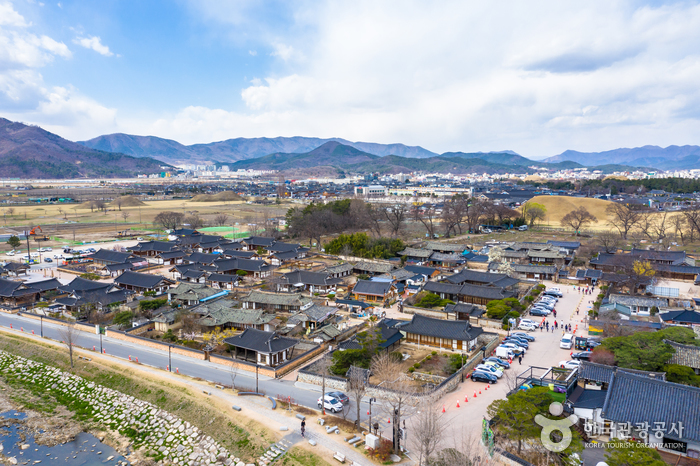
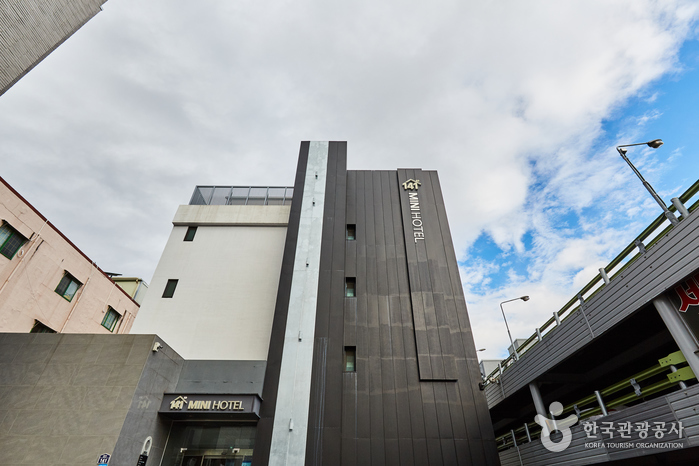
![Zones historiques de Gyeongju [Patrimoine mondial de l’UNESCO] (경주역사유적지구)](http://tong.visitkorea.or.kr/cms/resource/83/202783_image2_1.jpg)
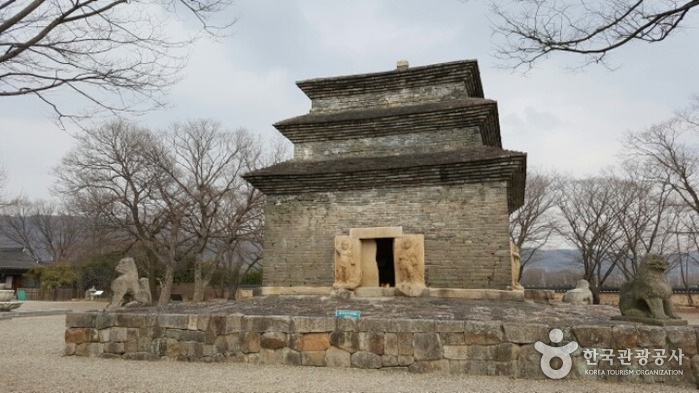
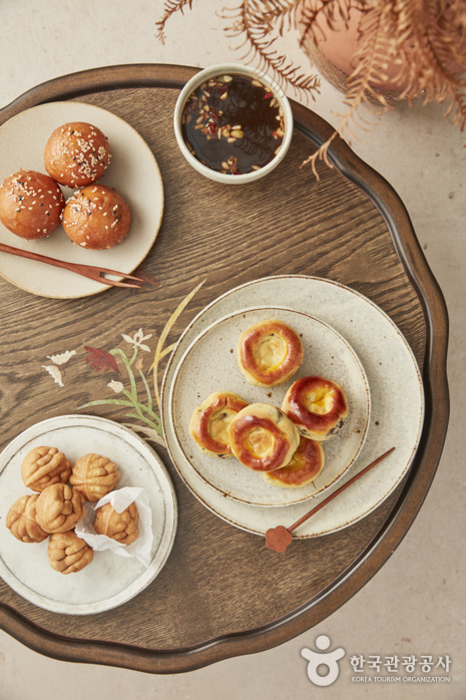

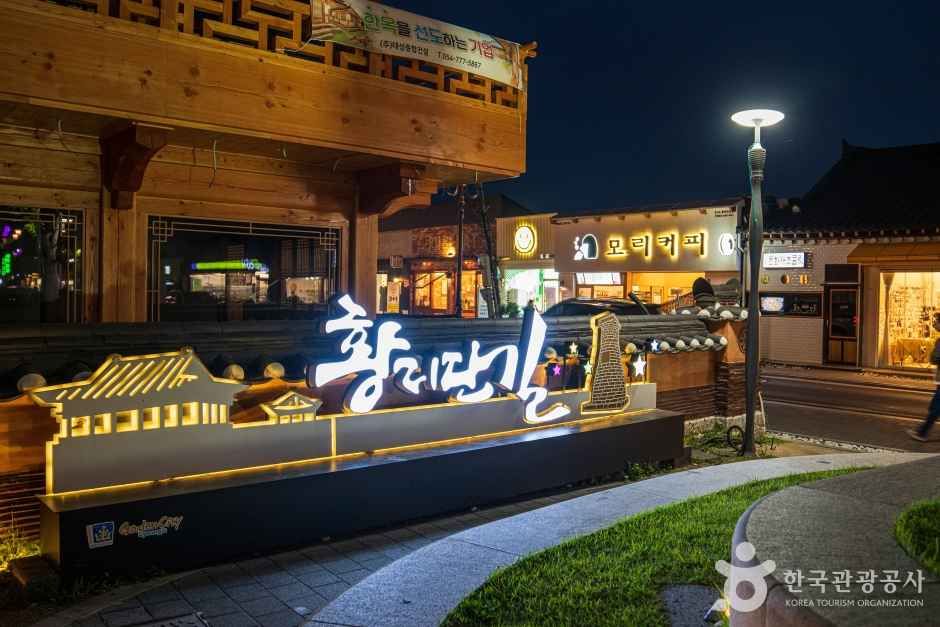
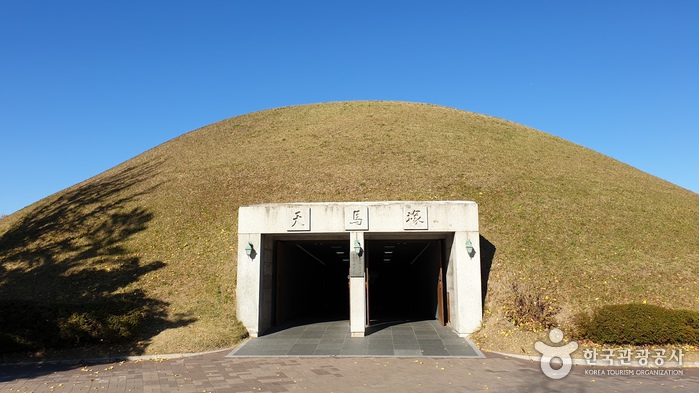
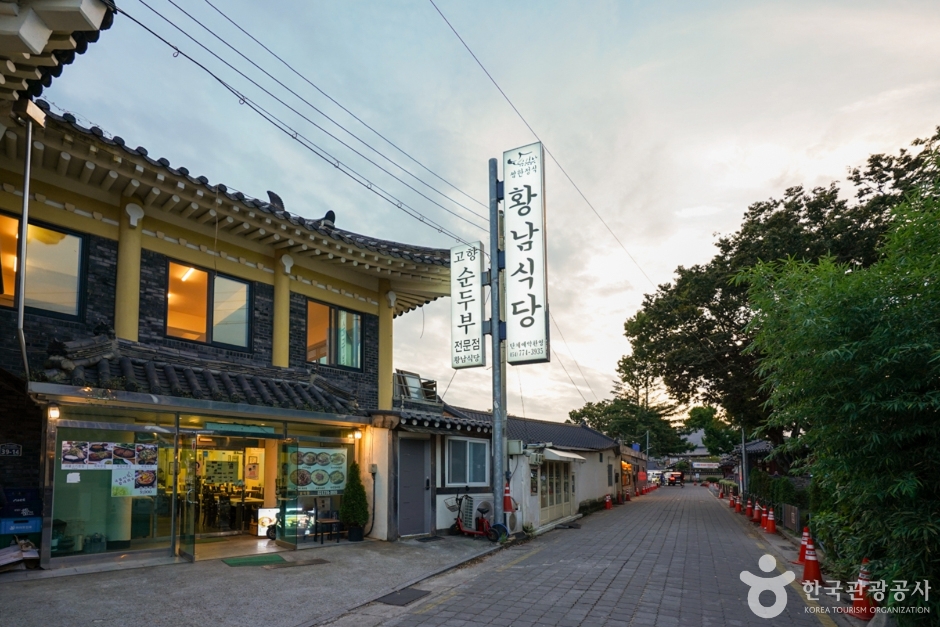
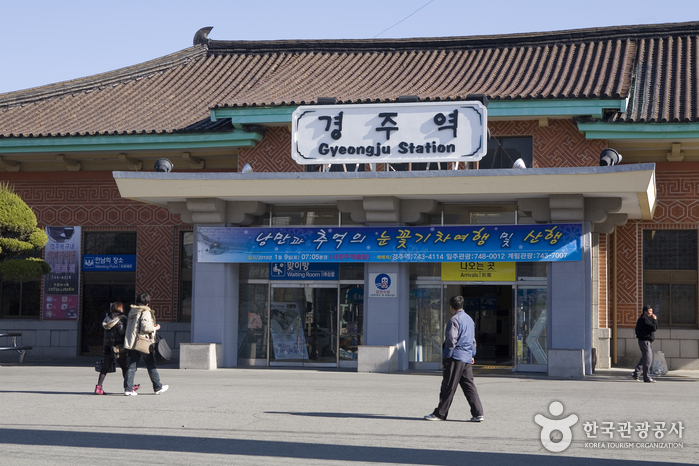
 Français
Français
 한국어
한국어 English
English 日本語
日本語 中文(简体)
中文(简体) Deutsch
Deutsch Español
Español Русский
Русский